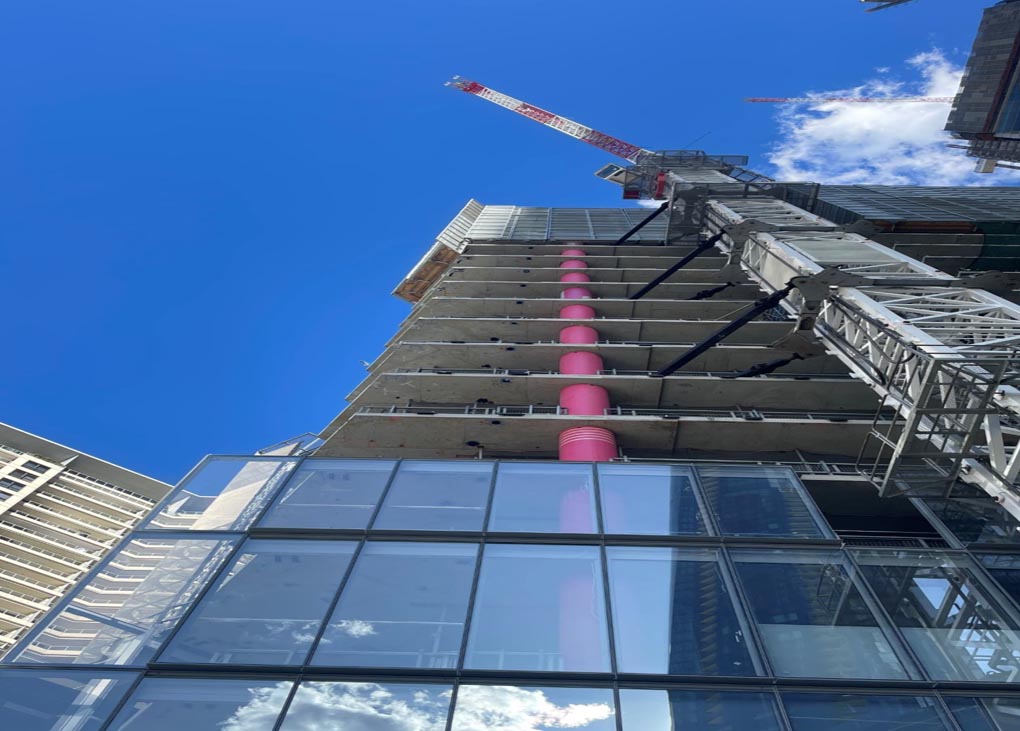The Green Building Council of Australia and Lendlease have released a practical guide to reduce upfront carbon emissions in new buildings and major refurbishments.
The authors note that 25 per cent of a typical building’s emissions can be attributed to the products and materials used during construction, and the construction processes themselves. These emissions can’t be undone.
Moreover, Australia’s upfront carbon emissions are projected to balloon from 16 per cent to 85 per cent of overall building emissions by 2050 if better choices are not made around materials and construction.
GBCA Chief Executive Davina Rooney says upfront emissions must be addressed now to secure a sustainable future for generations to come.
“Put simply, the buildings of today need to address the emissions of tomorrow,” Rooney says.
“Reducing our upfront emissions on future projects will have a material impact on reducing climate change, will create benefits for investors who are looking for assets with a clear decarbonisation pathway, and will help to achieve Australia’s decarbonisation goals.”
With the World Meteorological Organisation forecasting that global average temperatures are likely to exceed 1.5°C above pre-industrial levels in the next five years, the authors say the race to reduce upfront carbon emissions from construction activities is becoming more urgent.
Rooney says the projects featured in the guide have slashed their upfront emissions, but to meet our emissions reductions targets, this change must happen at scale.
“Lendlease’s project team for 25 King Street in Brisbane made impactful decisions in the design phase to swap out materials like concrete and steel for low-carbon options like engineered timber – resulting in upfront emissions savings of almost 40 per cent,” Rooney says.
Lendlease’s Head of Sustainability Australia Ann Austin says her company’s construction business plays a key role in two core aspects of the “Mission Zero” journey: phasing out the use of fossil fuels in construction, and eliminating upfront embodied carbon in building materials.
“While we’ve delivered 26 engineered timber buildings globally,” says Austin, “our research shows more needs to be done to decarbonise steel, concrete and aluminium – the three leading materials that typically contribute to more than 70 per cent of a building’s embodied carbon footprint.
“This guide will play an important role in supporting customers, supply chain and the broader industry to overcome barriers, collaborate and accelerate radical industry transformation to support a 1.5°C future.”
Another case study from the guide, Quay Quarter Tower in Sydney’s CBD, saved more than 12,000 tonnes of CO2 emissions during construction by retaining 65 per cent of the 1976 building’s original structure and 95 per cent of its core.
“It was just five years ago that we were only focused on reducing the operational carbon of an asset,” says Rooney. “As the grid continues to decarbonise, projects like Quay Quarter Tower show us that it is possible to reduce the emissions from construction, and there is value in redeveloping existing assets.”
A Practical Guide to Upfront Carbon shows how projects can find, reduce and report on upfront carbon through the different life-cycle stages, and spells out the business case for projects to reduce their upfront emissions.
The guide – which supports the GBCA’s calculation guide to upfront carbon – was developed with the support and contributions of the NSW government and Sustainability Victoria.
A practical guide to upfront carbon reductions can be downloaded here.
 Mark Vender
Mark Vender


Leave a Reply